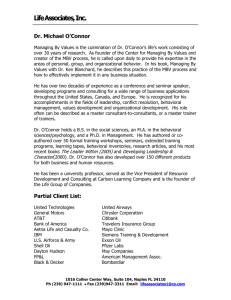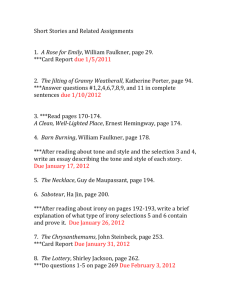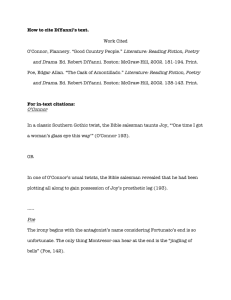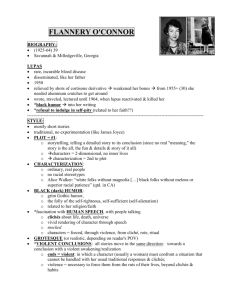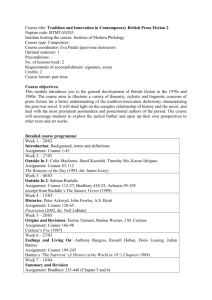A View from the Top: Where We're Headed in the
advertisement
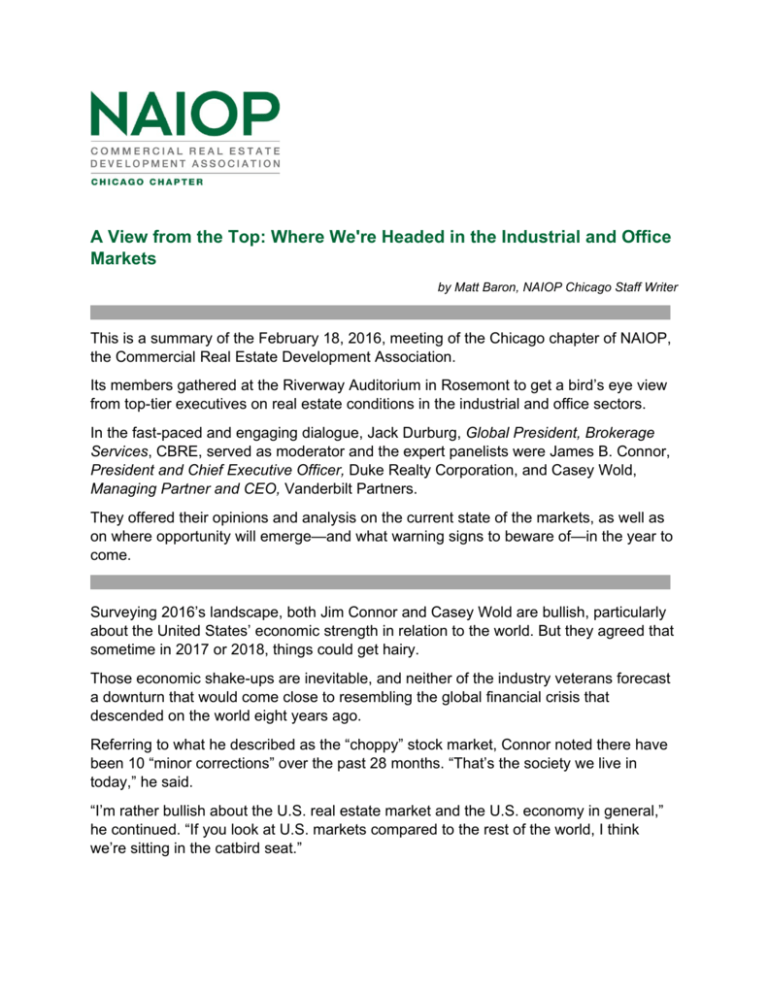
A View from the Top: Where We're Headed in the Industrial and Office Markets by Matt Baron, NAIOP Chicago Staff Writer This is a summary of the February 18, 2016, meeting of the Chicago chapter of NAIOP, the Commercial Real Estate Development Association. Its members gathered at the Riverway Auditorium in Rosemont to get a bird’s eye view from top-tier executives on real estate conditions in the industrial and office sectors. In the fast-paced and engaging dialogue, Jack Durburg, Global President, Brokerage Services, CBRE, served as moderator and the expert panelists were James B. Connor, President and Chief Executive Officer, Duke Realty Corporation, and Casey Wold, Managing Partner and CEO, Vanderbilt Partners. They offered their opinions and analysis on the current state of the markets, as well as on where opportunity will emerge—and what warning signs to beware of—in the year to come. Surveying 2016’s landscape, both Jim Connor and Casey Wold are bullish, particularly about the United States’ economic strength in relation to the world. But they agreed that sometime in 2017 or 2018, things could get hairy. Those economic shake-ups are inevitable, and neither of the industry veterans forecast a downturn that would come close to resembling the global financial crisis that descended on the world eight years ago. Referring to what he described as the “choppy” stock market, Connor noted there have been 10 “minor corrections” over the past 28 months. “That’s the society we live in today,” he said. “I’m rather bullish about the U.S. real estate market and the U.S. economy in general,” he continued. “If you look at U.S. markets compared to the rest of the world, I think we’re sitting in the catbird seat.” The Gross Domestic Product is projected to grow 2.4 percent this year, on the heels of annual growth the past three years averaging 2.2 percent—and has exceeded all other countries’ performance, except for China, he said. “I think there’s going to be a flight to quality,” Connor added. “International buyers— we’re seeing a lot of foreign investors coming to the market, particularly in the trophy office areas, hotels, multi-family. (They made) a big move into industrial last year.” Wold agreed with Connor’s assessment, saying the U.S. is “the place to be for sure on the office front. The turmoil that’s going on—I think China, there is an accident waiting to happen. I think they’ve been playing games for five to seven years, so I think that will impact growth. It could create a disturbance out there, but it’s not a direct disturbance as it relates to the U.S.” Of the 50 U.S. major cities—and Vanderbilt Partners is in roughly 10 of those markets— apart from Houston, “it’s healthy on a supply-and-demand basis…rent for the most part is really up,” noted Wold. “We’re actually happy it’s a little choppy,” he added. “As long as you’ve got staying power and you can finance properly, I think we’re in for a good stead this year.” In response to Durburg’s inquiry about what it was like to run his own company— Vanderbilt Partners was formed in 2014—Wold acknowledged that he “thought it would be different, but it really isn’t” because his entire career has come in an entrepreneurial environment. “You’re still trying to make the right, best decisions. You’re taking more risk, obviously, with your own capital,” Wold said. “But I must say I don’t really behave that much differently than I did when I was with the institutions. It’s surprising.” Connor, meanwhile, reflected on some of the differences today, compared to the industrial real estate sector when his father was in the business, from the late 1960s to the early 1990s. One staggering difference is that you previously could get a mortgage commitment from a bank over the phone. Another, related change is the size of transactions, which have become “mind-boggling” as some individual buildings are now sold for more than $1 billion and are approaching $2 billion, he said. Connor, who became Duke Realty’s CEO this year, said the company’s strategy to simplify its business model won’t change now that his title has changed (from Chief Operating Officer). Whereas the company used to “do anything that could make money”—including retail, medical, mixed-use, high-rise buildings and master plan communities—Duke Realty is about six years into a transition focusing on the industrial (80 percent) and medical office (20 percent) markets. “A lot of the feedback that we got from the Wall Street community—the investors, the analysts—was, ‘We don’t know what you are…you don’t fit any of the boxes.’” Whereas Duke Realty has been a seller in many property types, Vanderbilt Partners has emerged as a strong buyer, acquiring 6.8 million square feet of office space in four cities. The firm is now the second or third-largest landlord in Raleigh, Nashville and Fort Lauderdale, in addition to making a move into suburban St. Louis. Vanderbilt Partners employs a “cash flow kind of strategy in markets that are growing,” Wold said. The firm manages about half of its property holdings in-house, and contracts out to a third-party for roughly the other half. One principle permeates, however: “If a building can’t demand a tenant that’ll do a 10year lease, we don’t want to own the property,” Wold said. “It’s not that we’re only doing 10-year leases, but in the office business, if you are just a three-year lease, a five-year lease, churning, you’re eaten up by the tenant improvement costs.” Being able to exert long-term control, particularly in high-growth markets, is a key fundamental for Vanderbilt Partners, and results in better risk-adjusted returns, Wold added. Reflecting on Duke Realty’s current expansion plans, Connor said the company has learned from what he referred to as “the primary mistake that we made” before the Great Recession occurred: “We believed we needed to put people on the ground in those markets before we had critical mass,” Connor said. “So we had to make some tough decisions, shut some markets down and let some people go at the height of the recession.” By contrast, the firm’s approach now is to first acquire critical mass in a given market— and then “put people on the ground” locally. That game plan has included the purchase of land, spec developments and build-to-suit projects in southern California, northern California, New Jersey and eastern Pennsylvania. Of the Chicago market, Connor pointed out that the city is the second-largest industrial market in the nation—its 1.2 billion square feet behind only the greater Los Angeles market’s 1.6 billion square feet. “There’s a reason all six Class A railroads come through Chicago,” Connor said. “This is the crossroads of the Midwest. This is a very important market for us.” Duke Realty, he said, is continually exploring spec developments, build-to-suits, “anything we can do to continue to grow” in this market. Prompted by Durburg on what it takes to be a successful purchaser of real estate, Wold listed three qualities. The first is understanding “market pulse”—knowing whether a given market is going up or down. “It’s a fun business,” he said. “You basically talk to a million people and get their opinions on what the market rent is, so it’s not that complicated.” The second attribute he noted is being financially disciplined, which flows from “having so many things going on that you can turn things down. Always have a lot of stuff going on.” The ability to build strong relationships, and thereby build your credibility with peers, rounded out his list. “I never closed a deal with an email,” Wold said. In terms of Duke Realty’s emphasis, Connor said the firm is “very focused on quality.” “We want to have Class A buildings,” he noted. “Our portfolio compared to our industrial peers is the youngest by a wide margin. We pay very close attention to what’s going on in submarkets… If markets are changing, that’s when we become a seller. We also do new development where there’s opportunities…There’s always a flight to quality.” The same holds true for retaining personnel. “Our philosophy has always been to hire good people…this is a team sport,” Connor said. “Every deal requires a lot of people. Big deals require a huge number of people.” On the question of whether pricing has peaked in this investment market cycle, the two differed. “I think cap rates are as low as they are going to go, period,” said Wold. “For sure in the coastal markets—I don’t know if you can go much lower than 3 ½. But if you’re in a growth market, it doesn’t mean price isn’t going to go up. Prices will go up, because the rent is going to go up.” Connor believes cap rates will continue to go lower. He pointed to cap rates for office buildings in Paris in the low 3s and in Asia in the 2s. “We have the strongest economy. We have the greatest real estate market in the world. There’s a tremendous amount of foreign capital. Rents are rising, prices per square foot are going to go up, and I think cap rates are going to continue to go down.” The two projected that the Dow Jones Industrial average, at the end of 2016, will close higher than its Wednesday close of roughly 16,450. Wold said that increase would be “not much” and Connor reminded the audience that the all-time high is over 18,000. Whether interest rates go up or down isn’t of much concern to Connor, who said the Fed’s actions are “much ado about nothing” as far as he’s concerned. “It doesn’t affect what (rate) I borrow money at and quite frankly it never has,” said Connor. “...Lenders have figured out about where they want to lend their money and that’s been fairly standard for the last couple of years. I think it’s going to stay right where it is.” As for when the current economic cycle ends, it will vary by region, Wold said. He sees “storm clouds,” such as some troubling developments brewing in China and the Fed indicating that it may need to “bail out some foreign banks,” but it won’t be anything like the 2007-2008 meltdown. “I think supply and demand, the financing markets, the debt markets—it’s not crazy,” Wold added. “CMBS was nuts in ’07, ‘08. Underwriting was crazy. It is not (now)…As long as you’ve got staying power, you’re going to be fine.” In distilling insights from financial experts he respects, Connor said that 2018 is the “highest probability of some downturn of some sort…the second half of ’17 looks a little sketchy,” particularly in light of some “problematic economic indicators” over the past three to six months. During a brief question-and-answer period, Connor said that Class B properties have performed well the past 18 months, producing the best rent growth and best occupancy improvement across property types in that span. “I attribute that to the Class A properties had already reached higher levels,” he said. “You can make money in Class B and quite candidly, you can make money in Class C if you know what you’re doing. Our preference is just to focus on the A stuff.” Wold agreed that Class B has profit potential, especially if it is well located. Fielding a question on what he would advise young professionals coming out of college, Connor said key assets are not only having the right skill set and the willingness to “knock on doors, make calls, create value, solve problems.” “You have to love this business,” Connor added. “It’s a really tough, tough competitive business.” Wold agreed with that assessment, adding, “Take a lot of finance classes, get a great financial background. I don’t care if you’re on the marketing side of the equation or not, somehow get to know the numbers.” Meeting Sponsor: NAIOP Chicago 1700 West Irving Park Road, Suite 208 Chicago, IL 60613 Main: (773) 472-3072 | Fax: (773) 472-3076 | www.naiopchicago.org
